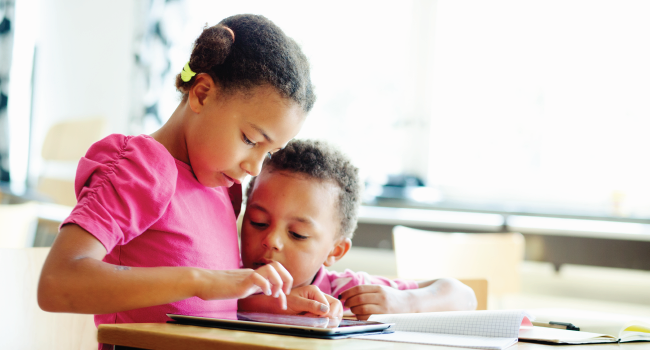
Spooky season is upon us, and to teachers and admin everywhere, there’s nothing scarier than clutter. As far as stressful messes go, classroom clutter takes the cake: disheveled books, piles of unsorted papers, and stale dry erase markers littered all over the place.
However, there’s another type of clutter that is arguably more important (and therefore, more disruptive to teachers), and that is digital debris. Although less noticeable to others, digital messes take up space, both electronic and mental.
If you’re feeling overwhelmed by your electronic messes, don’t be afraid! Just follow these six, must-do steps for digital cleaning.
- Get your email in good shape. Unless you’re someone who automatically sorts email as soon as it arrives (a tough, but good habit), you’re probably due for an email inbox overhaul. This is a good time to trash useless mail, and while you’re at it, unsubscribe from some pesky auto-mailings. Create specified folders (ex. parent communication, observations, extra-curricular activities) to stay organized.
- Be smart about storage. For smart phones specifically, loading your device with unused apps, dormant text messages, and too many pictures slows the efficiency of the machine (and uses precious battery power). This is especially important if you’re using teacher apps like Plickers or Class Dojo on your personal device. Rid your phone of excess “weight” by deleting apps you no longer use, comb through your photo albums, and delete old text messages.
- Cleanup your Google Classroom. Keep your GC nice and tidy by archiving old classes and deleting old class calendars. Consider creating a folder specifically to store exemplary work for students’ future reference. Remember to not delete the Classroom folder; it’s necessary and difficult to recover.
- Make your desktop presentable. If you’re too embarrassed to screen share your desktop with the class, then it’s time for some organizational overhaul. Sort documents, pictures, and other files into existing folders, or create new ones. While you’re at it, sift through old folders, trashing documents that are no longer relevant.
- Give your devices a dusting. Literally. Dust and particles can damage the efficiency of your machine over time. To clean it, wipe the exterior and screen with a dry, microfiber cloth. Gently turn over the keyboard to allow the debris to fall. If you’re feeling extra ambitious, use compressed air to ensure that it’s as clean as new and running smoothly.
- Backup the important stuff. It’s an easy task to forget, but one that will serve you well in the future: offload pictures, videos, and important files to a safer location. Dropbox and Google Drive provide perfect locations to safely store files, but you can also opt to use an external hard drive.
Implementing these steps will give you (and your devices) renewed energy and a fresh outlook.

